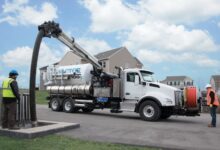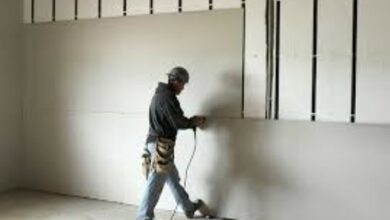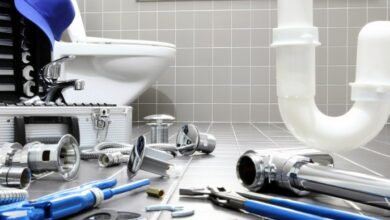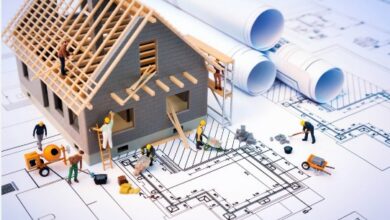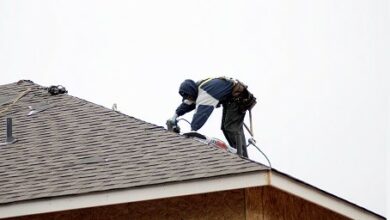How to Troubleshoot Common HVAC Issues

HVAC systems are vital for maintaining comfort in our homes, but they can occasionally encounter issues that disrupt their performance. Understanding how to troubleshoot common HVAC problems can save you time and money while ensuring your system operates efficiently.We’ll look at doable methods for locating and fixing common HVAC problems., helping you maintain a comfortable indoor environment. If you are looking for a professional, you can learn more about Summers Plumbing Heating & Cooling.
Practical steps to identify and resolve typical HVAC issues
1. Check the Thermostat Settings
One of the first steps in troubleshooting HVAC issues is to check the thermostat settings. Ensure the thermostat is set to the correct mode (heating or cooling) and that the temperature is appropriately adjusted. Sometimes, a simple oversight, such as accidentally setting the thermostat to the wrong mode or temperature, can cause the system to malfunction. If your thermostat uses batteries, check if they need replacement. Additionally, consider recalibrating the thermostat if you suspect it does not accurately reflect the indoor temperature. A properly set and functioning thermostat is crucial for the effective operation of your HVAC system.
2. Inspect and Replace Air Filters
Clogged or dirty air filters are a common cause of HVAC problems. Over time, filters accumulate dust, dirt, and other debris, restricting airflow and reducing the system’s efficiency. Uneven heating or cooling, higher energy use, and equal system failures might result from this. Check your air filters frequently, and replace them if they seem blocked or unclean. Depending on usage and type, filters for the majority of HVAC systems should be changed every one to three months. Keeping air filters clean ensures optimal airflow and helps maintain the system’s performance.
3. Examine the Circuit Breaker and Power Supply
If your HVAC system is not turning on, the issue might be related to the power supply. Check the circuit breaker panel to see if any breakers have tripped. If you find a tripped breaker, reset it and see if the system powers on. Additionally, ensure that all switches related to the HVAC system, including those near the indoor and outdoor units, are in the “on” position. If the system still does not turn on after these checks, a more complex electrical issue could require professional attention. Ensuring a stable power supply is essential for the operation of your HVAC system.
Read also: Storm Damage Restoration: Repairing Roofing After Severe Weather Events
4. Inspect the Outdoor Unit
Various external factors can affect your HVAC system’s outdoor unit. Debris, such as leaves, dirt, and grass, can accumulate around the unit, obstructing airflow and reducing efficiency. Inspect the area around the outdoor unit and clear any debris. Additionally, check the unit for signs of physical damage or wear, such as bent fins or rust. Clean the fins and coils gently with a garden hose, not damaging them. Ensuring the outdoor unit is clean and free from obstructions helps maintain proper airflow and system efficiency.
5. Check for Refrigerant Leaks
Low refrigerant levels can cause your HVAC system to struggle with cooling. Signs of low refrigerant include reduced cooling efficiency, longer cooling cycles, and ice formation on the evaporator coils. If you suspect a refrigerant leak, To identify and fix the problem, a qualified technician must be contacted. Leaks of refrigerant must be handled carefully since they can be bad for the environment. Regular maintenance can prevent refrigerant leaks and ensure your system operates efficiently. Addressing refrigerant issues promptly is crucial for maintaining effective cooling performance.
6. Listen for Unusual Noises
Unusual noises coming from your HVAC system can indicate various issues. Banging, clanking, or rattling sounds may suggest loose or broken components while squealing or grinding noises could indicate motor or belt problems. If you hear any unusual sounds, turn off the system and inspect it for obvious issues. Tighten any loose screws or bolts and check for visible signs of wear or damage. If the noises persist, it may be necessary to call a professional technician to diagnose and fix the problem. Addressing unusual noises promptly can prevent further damage and maintain system efficiency.
7. Ensure Proper Airflow
Restricted airflow can significantly impact the performance of your HVAC system. Verify that all vents and registers are open and unobstructed by drapes, furniture, or other items. Additionally, inspect the ductwork for any visible signs of leaks or obstructions. Proper airflow is essential for the efficient operation of your HVAC system, and ensuring that air can circulate freely throughout your home can improve comfort and efficiency. By addressing airflow issues, you can enhance the performance of your HVAC system and maintain a comfortable indoor environment.
8. Monitor System Performance
Verify that all vents and registers are open and unobstructed by drapes, furniture, or other items. Pay attention to how long it takes for your home to reach the desired temperature, any fluctuations in indoor climate, and any unusual spikes in energy bills. These can be indicators of underlying issues that need to be addressed. Keeping a log of system performance and maintenance activities can also help you track patterns and identify potential problems before they escalate. By staying vigilant and proactive, you can ensure your HVAC system’s long-term efficiency and reliability.
Conclusion
Troubleshooting common HVAC issues involves practical steps homeowners can take to maintain system efficiency and comfort. You can identify and resolve many HVAC problems by checking thermostat settings, inspecting and replacing air filters, examining the circuit breaker and power supply, inspecting the outdoor unit, checking for refrigerant leaks, listening for unusual noises, ensuring proper airflow settings, and monitoring system performance. You can identify and resolve many HVAC problems. By taking these preventative steps, you can guarantee that your HVAC system runs efficiently and avoid expensive repairs, providing a comfortable indoor environment year-round. Taking the time to troubleshoot and maintain your HVAC system is a valuable investment in your home’s comfort and energy efficiency.



